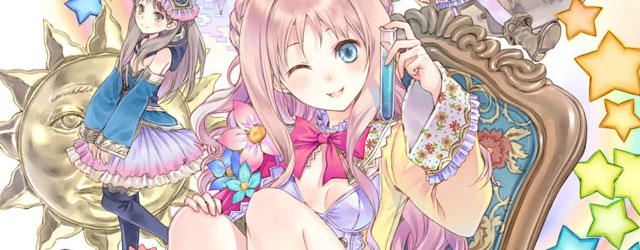[tab:Review]
When I reviewed the first two Atelier games in the Arland trilogy, I was surprised by what the games had to offer. They are a simple blend of gathering quests mixed with a simple combat system, but manage to avoid being too difficult or too boring. Now, the final chapter in the Arland trilogy is here in the form of Atelier Meruru: The Apprentice of Arland. I have to say, the trilogy goes out with the best in the series.
You play as Meruru, the princess of Arl. She wants nothing more than to be an alchemist and spends most of her time at Totori’s workshop studying alchemy behind the back of her father, the king. His majesty finds out about this and gives Meruru an ultimatum: prove that she can become a good alchemist and help her kingdom’s expansion by the use of alchemy. She has 3 years to expand the kingdom, build the population and increase the size and influence of her kingdom or she will have to give up alchemy forever.
The game takes the well known aspects of the first two games and improves on them. You can go to different places on the world map and gather items for synthesizing, battle monsters and explore and unlock new areas. Every time you do something, whether fighting enemies, going to new areas, creating items in the workshop or gathering materials, you will use up time. This is very important, since failure to accomplish your goal in the three years will earn you a bad ending.
You are given goals to complete that will help with the expansion of the kingdom. Each task has conditions that range from killing all the enemies in an area to creating certain items and delivering them to the work site. Completing these goals will reward Meruru with building points that can be used to create new buildings and improve the ones already in place. These both boost your party in many ways while increasing the population of the kingdom.
You can also take on the traditional quests that players of the first two game should be familiar with. At the tavern, you can accept gathering and hunting quests. These no longer have an expiration date, so you can take as long as you wish with them. Completing these will make your popularity grow. There are also party member quests that will increase your relationship with that party member rewarding you with bonuses.
The combat hasn’t changed much at all from the first two games. It is a turned based system. You have three party members at all times. One of them will always be Meruru. Alchemists in your party can use items, while other members can use special abilities that use up magic points. There is also a gauge that fills up for your secondary party members. When full, they can either guard Meruru when targeted, or follow up with another attack after an alchemist uses an item. It’s a very simple system that can get a little monotonous at times, but this game does not focus on combat very much. It’s all about completing quests and synthesizing.
Everything is a lot more streamlined in this game. You can highlight a goal in the menu and if you need to create something that you don’t have the ingredients for, you can choose to look at the recipe. If you can make those ingredients, as long as you’re in the workshop, you can do it right then and there. It’s a nice system that keeps players from getting too confused, especially since some of the formula can get very complex.
The presentation has been upgraded, as well. The graphics are still rather simplistic, but everything just feels more polished. The music was stuck in my head for hours on end, and the voice acting, while a little annoying at times, is very well done. Now, don’t get me wrong, JRPG players and anime fans will like these situations and characters a lot more than your average video game player. Everyone should know this going into the game. Still, I can’t fault the cutesy characters too much. Practically every character in the first two games makes a major appearance and even joins your party.
The game has that addicting power to it. You’ll begin to complete goals and see you only need 10 more build points to get that upgraded library you wanted. So, you spend another 2 hours making items and finally finishing up the goal. You can easily lose a lot of time in this game.
For fans of the series, you will not be disappointed. Almost every character you have known in the trilogy will return, and the new characters you come across are as goofy and loveable as the older ones. For new comers, I would suggest playing the first two games, but Meruru does offer some good back story in the menus for the ones not too familiar with the series. I have to say, JRPG fans should really look into this game. There is enough here to keep players busy for well into the 30 hour mark. The game really can get addicting for players wanting to do “just one more quest.” The trilogy really goes out with a bang with Meruru, and amine fans and JRPG players should not miss out on it.
Review copy of game provided by publisher.
[tab:Screenshots]
[tab:END]


